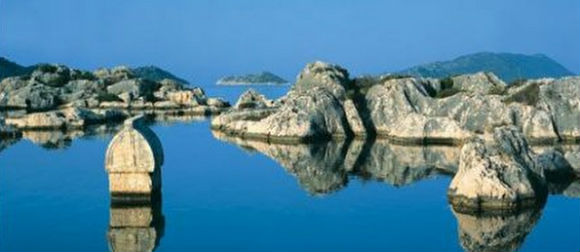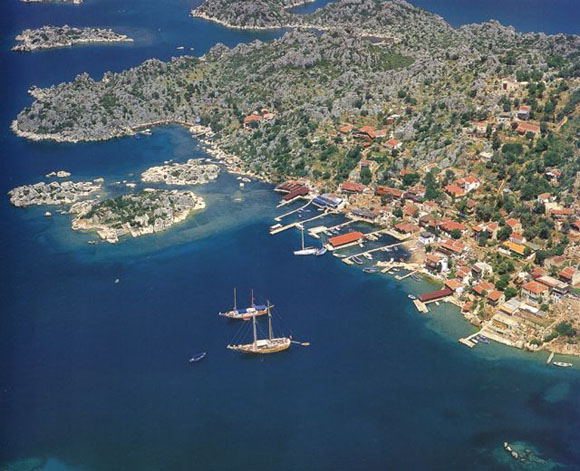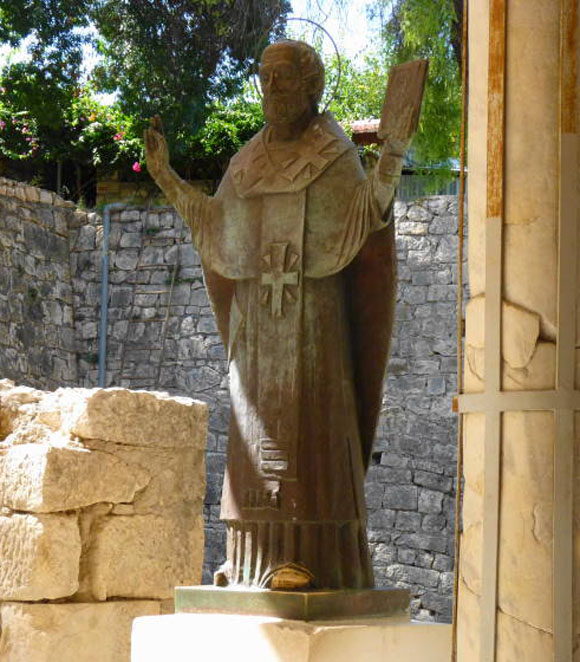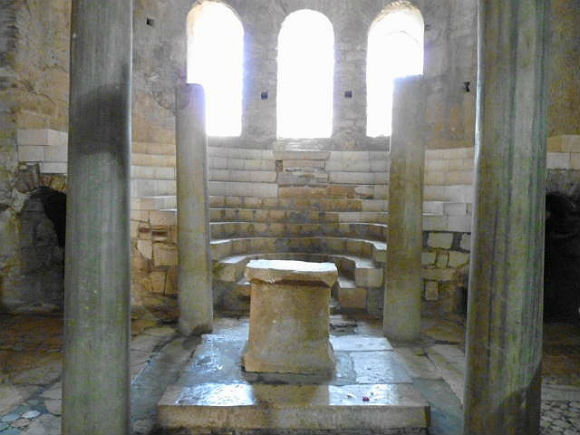The hometown of the man who inspired the legend of Santa Claus is a long way from the snow and arctic lights of the North Pole.
The land Saint Nicholas is originally from rarely sees snowflakes it is a village of palm trees and orange groves on the Mediterranean Sea in what is modern day Turkey. Nicholas, patron saint of sailors and children, lived and died there nearly 18 centuries ago.
The legend of the 4th century bishop who gave gifts to the poor has spread since the earliest days of Christianity.
Eventually, Saint Nicholas evolved from the bald and bearded man depicted in Orthodox icons dressed in long robes and clutching a bible to the more rotund and secular character of jolly old Saint Nick.
Though Santa Claus is today inextricably intertwined with Christmas, hardly any of the residents of Saint Nicholas’ hometown celebrate the holiday.
Demre is an overwhelmingly Muslim town where the call to prayer periodically echoes from minarets over the sun-bleached stones of chapels and a sprawling Roman amphitheater that was constructed long before the days of Saint Nicholas.
“Nobody celebrates Christmas here. It’s interesting,” said Baris Yuksel, speaking in his shop amid a sea of gold-framed icons of Saint Nicholas a man locals know here as “Noel Baba,” or Father Christmas.
Like many other residents of Demre, Yuksel grows and exports tomatoes from some of the many greenhouses that surround this small community.
But in recent years he has also made a lucrative business selling images of Demre’s most famous son to the hundreds of thousands foreign tourists who visit the Church of Saint Nicholas every year.
Demre’s gratitude is evident in the town’s official logo which features the familiar bearded face of Santa Claus and a bronze statue of a slimmer Saint Nicholas holding hands with two smiling children, which overlooks the central town square.
The man behind the legend is believed to have died in Demre in 343 AD, when the city was then known as Myra and many of the inhabitants spoke ancient Greek.
Nicholas is a real man. He lived here and he died here, and he talked about Christianity in a widespread area.
Nicholas of Myra was a Christian bishop, who is depicted in ancient engravings chopping down a tree that symbolizes the region’s earlier pagan Roman religion. He destroyed pagan temples also,” Cevik said, referring to the Temple of Artemis, which is believed to have been razed to the ground on Nicholas’ order. They destroyed the pagan buildings and then they used the materials of those buildings to build their churches.
A 12th century Byzantine chapel his team recently discovered buried next to the house of part of the floor of the chapel is constructed out of stones pillaged from the sarcophagi of earlier pagans.
Saint Nicholas was honored as a martyr. Christian priest named Nicholas of Sion, who lived in the area more than 100 years after Saint Nicholas’ death.
Christian believers began combining the stories of the two men named Nicholas. “After the 6th century AD, there are 2 Nicholases in one figure, “They come together and we know only one Saint Nicholas.”
In subsequent centuries, the tomb of Saint Nicholas became a place of pilgrimage for Christians traveling from around the Mediterranean Sea.
Gradually, other European cultures adopted the popular saint, and added their own twists to his image.
The Santa Claus we see today appears to have evolved out of a Scandinavian version of the saint, who was later popularized by 19th century American writers and U.S. companies like Coca Cola, which used Santa’s image to promote their products.
The mayor of Demre is a big fan of this contemporary Santa Claus, which some Turks refer to as the “Coca Cola Santa.”
“Indeed, he is something that the Americans invented,” said Mayor Suleyman Topcu, “[but] he is nice and colorful.”
But some of Demre’s younger residents want to set the record straight on their town’s most famous son.
No matter what version you believe in, everyone in Demre seems to agree it is the spirit of Saint Nicholas giving to those who are in need that is the legendary man’s most enduring legacy.
Demre,






One of the best preserved churches we have visited. The paintings are wonderful. Plenty of camera use. It makes you think how our modern day buildings will be in that many years.
amust see place just unbelievable,we only had about 45 mins at this site cos we were running late on are coach tour coulda stayed for a couple of hours to get into the real feel of this place,
Frankly i expected much more from here but i cant deny that rock tombs are interesting. Goverment organized the place very well but it seems there are a lot to do in the ruins . Saint nicholas church isvery interesting, he was a real person with miracles and as i understand he's very important especially for orthodox christians. Because of…
Myra is one of the major ancient cities in Lycia region. We saw very interesting rock cut tombs, but we did not have a chance to explore. The theatre, with the capacity of 5000 people, was in a good mood. The church of Santa Claus is also recommended.
An amazing visit, a must see,very casual site to spend time at,very little restrictions in what you can see.Go early to miss the crowds.
Combines well with the church of St Nicholas. Still being excavated and doesn't give a good idea of the city.
Brilliant, we were shocked at the details on these tombs, how on earth they made them into the hill, you can see large piece's of marble everywhere some have been carved some haven't.
We really enjoyed this attraction.
We saw Myra as part of a multi attraction excursion. It was a fascinating place for me and my wife. I knew nothing about what we were about to visit. The tour we were on was in Russian. My wife speaks English and Russian. Her sister and brother in law only Russian. So I didn't understand any of the narration…
We managed to time our visit at lunchtime and missed the coach tours. Beneath the unsightly protection the church is very evocative. Don't forget to look down at the beautiful, fine mosaics. The courtyard was warm and still with the sound of birds singing and the interior dark and cool. The murals are particularly lovely. The whole scale of the…
This seems to be a pilgrimage site for Russian tourists – not sure why. A very attractive Byzantine church. Not a large site so it is an easy short visit.